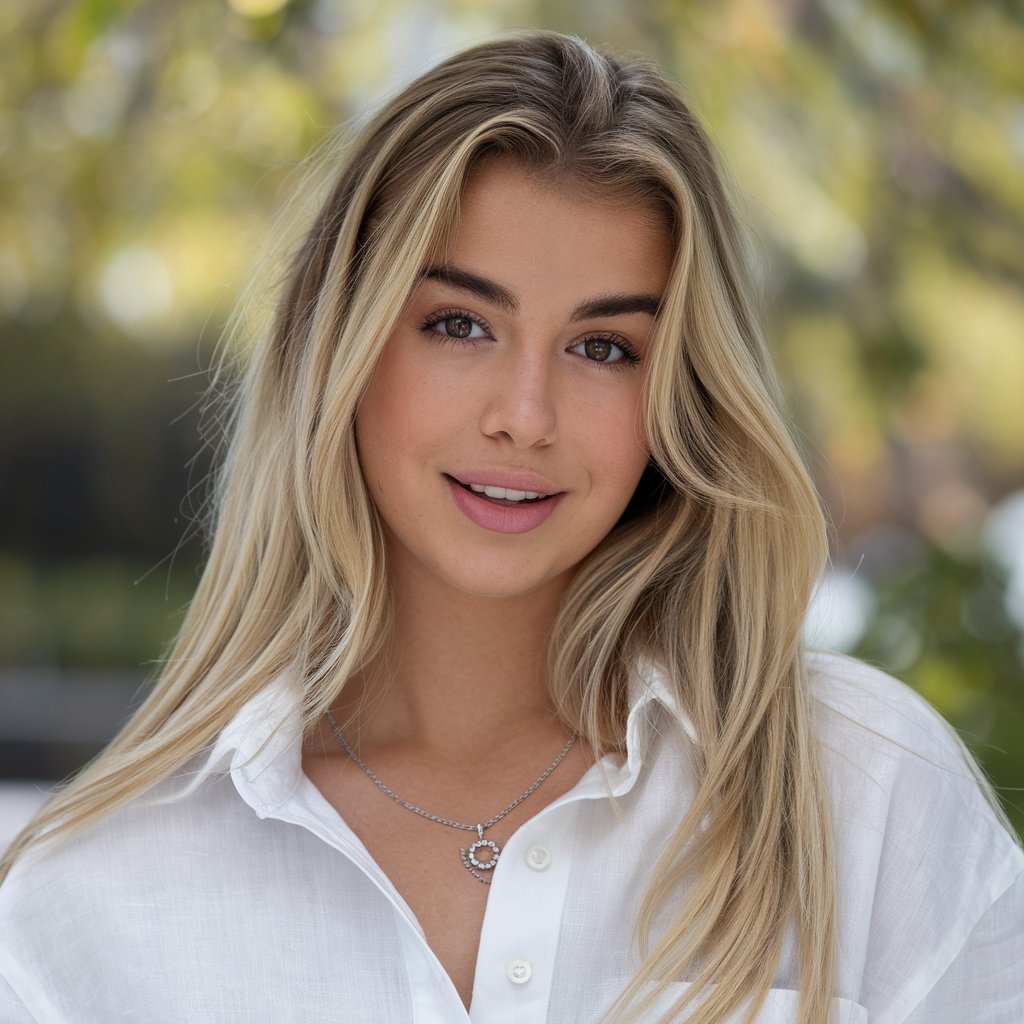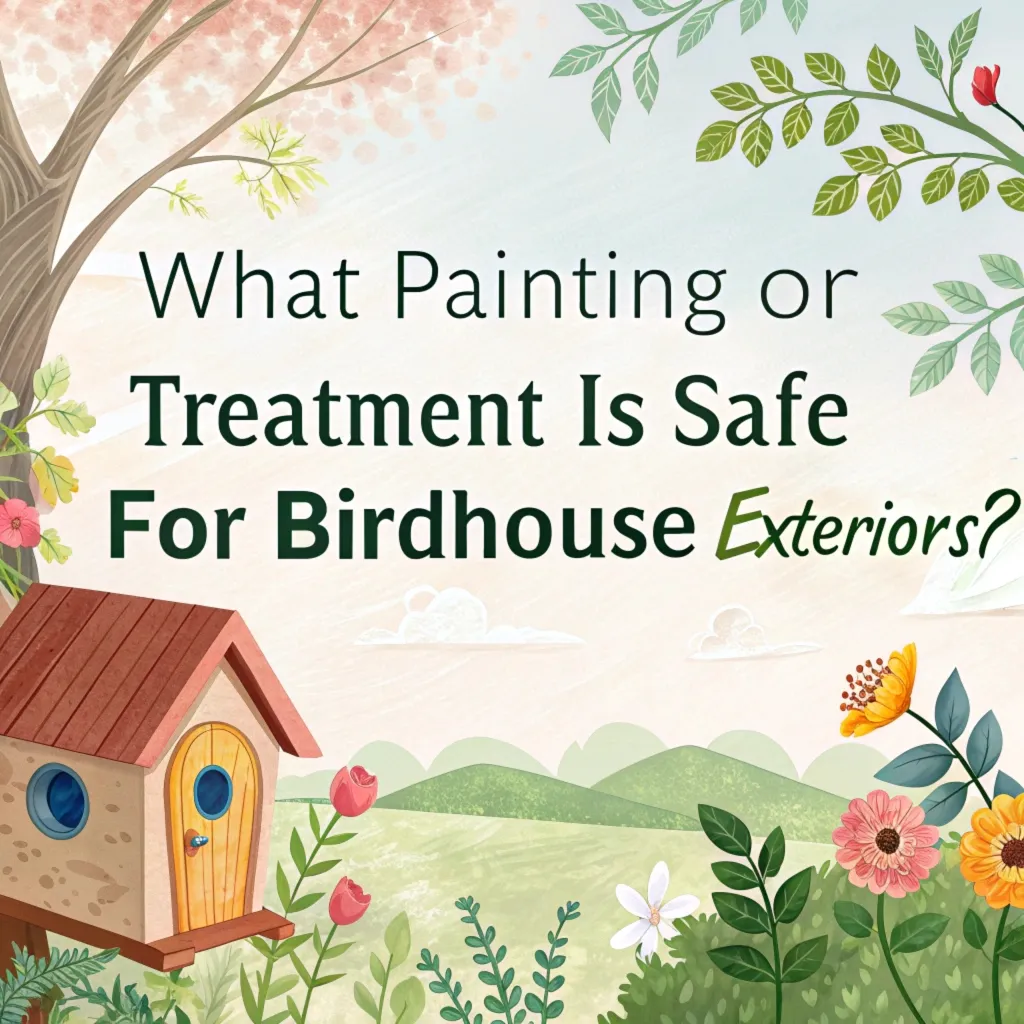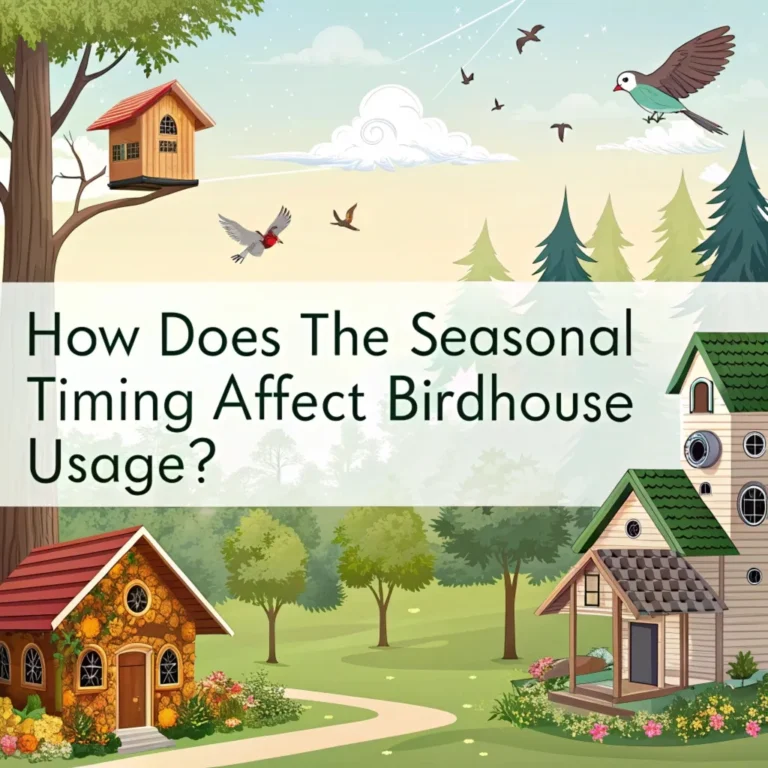What Painting or Treatment is Safe for Birdhouse Exteriors?
Creating a welcoming home for birds requires careful consideration of materials and finishes.
Painting or treating birdhouse exteriors protects the structure and ensures a safe environment for avian residents.
This guide explores safe options for birdhouse exteriors, focusing on non-toxic paints and treatments that preserve wood while keeping birds healthy.

Key Takeaways
- Use water-based latex or acrylic paints labeled as non-toxic for birdhouse exteriors
- Avoid lead-based paints, creosote, and chemical preservatives that can harm birds
- Apply natural oils like linseed or tung oil for a safe, protective finish
- Choose neutral colors like brown, green, or gray to blend with surroundings
- Paint only the exterior, leaving the interior and entrance hole unpainted
- Ensure proper ventilation and drainage when applying any finish
- Clean and maintain birdhouses regularly to keep them safe and attractive
- Consider using milk paint for an all-natural, non-toxic option
- Apply a weatherproof sealer to extend the life of painted birdhouses
- Avoid dark colors that can cause overheating in direct sunlight
Birdhouses play a crucial role in supporting local bird populations, especially in urban areas where natural nesting sites may be scarce.
By providing safe, well-constructed homes, we can encourage biodiversity and help protect various bird species.
Proper painting and treatment of birdhouses not only enhance their appearance but also extend their lifespan, ensuring they remain functional for many nesting seasons.
When selecting materials for birdhouse construction and finishing, it’s essential to prioritize the health and safety of birds.
Many common paints and wood treatments contain chemicals that can be harmful if ingested or inhaled by birds. By choosing bird-safe options, we create a healthier environment for our feathered friends and contribute to conservation efforts.
Safe Paint Options for Birdhouses
Water-Based Latex Paints
Water-based latex paints offer a safe and durable option for birdhouse exteriors. These paints provide good coverage and weather resistance without harmful chemicals. When selecting latex paint, look for products specifically labeled as non-toxic and suitable for exterior use.
Acrylic Paints
Acrylic paints also work well for birdhouses. They dry quickly and resist fading. Choose acrylic paints designed for outdoor use and ensure they do not contain toxic additives. Many craft stores offer acrylic paints suitable for birdhouse projects.
Milk Paint
Milk paint provides an all-natural alternative for birdhouse exteriors. This non-toxic option contains no volatile organic compounds (VOCs) and is safe for birds. Milk paint comes in powder form, allowing you to mix only what you need for your project.
Proper application of paint is crucial for the longevity of your birdhouse. Before painting, ensure the wood surface is clean and dry.
Sand any rough spots to create a smooth surface for better paint adhesion. Apply thin, even coats, allowing each layer to dry completely before adding another. This technique ensures a durable finish that will protect the birdhouse for years to come.
Remember to protect yourself while painting by working in a well-ventilated area and wearing appropriate safety gear, such as gloves and a mask.
Natural Oil Treatments

Linseed Oil
Linseed oil offers a natural way to protect wooden birdhouses. This treatment penetrates the wood, providing water resistance and enhancing durability. Apply linseed oil to the exterior of the birdhouse, avoiding the interior and entrance hole.
Tung Oil
Tung oil serves as another safe option for treating birdhouse exteriors. This natural oil creates a water-resistant finish that helps preserve the wood. Like linseed oil, apply tung oil only to the exterior surfaces of the birdhouse.
Natural oils provide excellent protection for wooden birdhouses while maintaining a rustic, natural appearance.
These treatments penetrate deep into the wood fibers, offering long-lasting protection against moisture and UV damage. When applying oils, use a clean cloth or brush to ensure even coverage, and wipe away any excess to prevent sticky residue.
For best results, reapply natural oil treatments annually or as needed to maintain protection.
Color Considerations
Neutral Tones
When painting birdhouses, choose colors that blend with the natural environment. Neutral tones like brown, green, and gray help camouflage the birdhouse, protecting its inhabitants from predators. Avoid bright or fluorescent colors that may attract unwanted attention.
Light Colors
Opt for lighter shades when painting birdhouses exposed to direct sunlight. Dark colors absorb heat, potentially creating dangerous conditions for nesting birds. Light colors reflect sunlight, helping maintain a comfortable temperature inside the birdhouse.
Color selection plays a significant role in the functionality and safety of birdhouses. While aesthetics are important, the primary goal should be to create a safe and comfortable environment for birds.
Consider the natural habitat and surroundings when choosing colors to ensure the birdhouse blends seamlessly with its environment.
Experiment with different color combinations to create an attractive yet camouflaged birdhouse that will appeal to both birds and humans alike.
Application Techniques
Exterior Only
Paint or treat only the exterior surfaces of the birdhouse. Leave the interior unpainted to maintain a natural environment for nesting birds. Avoid painting the entrance hole, as this may deter birds from using the house.
Thin Coats
Apply paint or treatments in thin, even coats. This approach ensures proper coverage without excess buildup. Allow each coat to dry completely before applying additional layers.
Ventilation and Drainage
Maintain proper ventilation and drainage when painting or treating birdhouses. Do not cover or fill existing ventilation holes or drainage openings. These features are essential for the health and safety of nesting birds.
Proper application techniques are crucial for creating a safe and durable birdhouse. When painting, use smooth, even strokes to avoid drips and runs.
Pay special attention to corners and edges, as these areas are prone to wear and tear. Always allow sufficient drying time between coats to ensure a strong, long-lasting finish.
Consider using painter’s tape to protect areas that should remain unpainted, such as ventilation holes and drainage slots.
Maintenance and Cleaning
Regular Inspections
Inspect painted or treated birdhouses regularly for signs of wear or damage. Touch up paint or reapply treatments as needed to maintain protection. Remove any peeling or flaking paint to prevent birds from ingesting harmful particles.
Annual Cleaning
Clean birdhouses thoroughly at the end of each nesting season. Remove old nesting material and disinfect the interior with a mild bleach solution. Allow the birdhouse to dry completely before closing it up for the winter.
Routine maintenance is essential for keeping birdhouses safe and attractive to birds. Regularly check for signs of wear, such as peeling paint or loose boards. Address any issues promptly to prevent further damage and ensure the birdhouse remains a safe haven for its inhabitants.
Cleaning should be done carefully to avoid disturbing nesting birds. Always wait until the nesting season is over before performing thorough cleaning and maintenance.
Safety Precautions
Non-Toxic Materials
Always use non-toxic paints and treatments for birdhouses. Avoid products containing lead, zinc, or other heavy metals. Read labels carefully and choose materials specifically designed for use around animals.
Proper Drying Time
Allow painted or treated birdhouses to dry completely before installation. This precaution prevents birds from coming into contact with wet paint or treatments that may be harmful if ingested.
Safety should be the top priority when creating and maintaining birdhouses. In addition to using non-toxic materials, consider the overall design of the birdhouse to ensure it provides a safe environment for birds.
Avoid sharp edges or protruding nails that could injure birds, and ensure the entrance hole is the appropriate size for the target species.
Always follow manufacturer instructions when using paints or treatments, and dispose of any leftover materials properly.
FAQs
What is the best paint for birdhouse exteriors?
Answer: The best paint for birdhouse exteriors is a non-toxic, water-based latex or acrylic paint designed for outdoor use. These paints provide durability and weather resistance without harming birds.
Can I use regular house paint on a birdhouse?
Answer: Regular house paint may contain harmful chemicals and is not recommended for birdhouses. Always use paints specifically labeled as non-toxic and safe for use around animals.
How often should I repaint my birdhouse?
Answer: Repaint your birdhouse every 2-3 years or when you notice significant wear or peeling. Regular maintenance helps protect the structure and keeps it attractive to birds.
Is it necessary to paint a cedar birdhouse?
Answer: Cedar naturally resists decay and does not require painting. However, you may choose to paint a cedar birdhouse for aesthetic reasons or additional protection. If painting, use non-toxic, breathable paints to preserve cedar’s natural properties.
Can I use wood stain on a birdhouse?
Answer: Wood stains can be used on birdhouses if they are non-toxic and specifically labeled as safe for use around animals. Natural oil-based stains like linseed or tung oil are preferable to chemical-based options.

Luna is the passionate founder and author of Birds and You, a website dedicated to sharing her love for birds with fellow enthusiasts. Through her engaging articles and guides, she aims to educate and inspire others to explore the fascinating world of birds. When she’s not writing, you can find Luna observing birds in their natural habitats or sharing beautiful bird photography on Pinterest. Join her on this journey to celebrate and protect our feathered friends!







